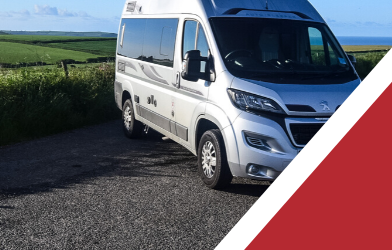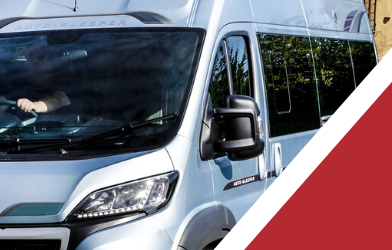Modern motorhomes are very much all-weather leisure vehicles – they are heated and well-insulated, making them a perfect home from home even in the dead of winter.
Even so, it is important to be realistic and recognise that while your motorhome is designed for winter conditions on the roads, these are likely to prove tricky for any driver. The hazards of ice, snow, and severely reduced visibility are all the more challenging if you are driving a motorhome or auto-sleeper.
So here are a few tips and suggestions for safe winter driving in your treasured motorhome:
Be prepared
- probably the single most important precaution to take before driving in winter is to be prepared;
- weather conditions may change at a moment’s notice, and you don’t want to be caught off-guard by the sudden appearance of ice, snow, or sleet;
- indeed, if snow or other severe weather warnings have been issued – as was the advice for all drivers in the Southeast of England on the 11th of December 2022 – then any outing in your motorhome is unlikely to be considered an essential journey and you need to stay at home;
- you might also want to sign up for the online weather alerts issued by Met Office which can advise you by email of impending danger and hazards on the roads;
Winter tyres and chains
- if you know we are in for a prolonged cold snap or heavy snowfalls are predicted – you might even be driving your motorhome to one of Europe’s winter sports destinations – you might want to consider investing in winter tyres as a very minimum;
- in some areas of Austria, France, Germany, and Switzerland, advises the RAC, winter tyres, snow chains or snow socks – textile liners that wrap around the wheels of your motorhome – may be a legal requirement;
Keep a safe distance
- keeping a safe distance from the vehicle in front of you is ever-green advice – but becomes even more critical in wintertime;
- as conditions on the roads deteriorate – and especially if there is ice or snow – you may need to triple or even quadruple your distance behind the vehicle in front;
- that extra gap might make all the difference you need if the vehicle stops suddenly and your braking and final stopping distance is put to the test;
- even in rain, your braking distance is likely to increase – and on icy roads, says the RAC, you will be well advised to allow up to 10 times the normal recommended distance between you and the car in front;
Demisting
- winter driving also relies on your having an even more familiar knowledge of your motorhome’s controls – especially the demister;
- the last thing you want to be doing when trying to concentrate on the road ahead is to be fiddling with unfamiliar controls to get the correct flow of air from the demister;
De-icing
- clearly, any accumulated ice on the windscreen needs to be removed before setting off but never try to do so by pouring hot water over it – you are likely to crack your windscreen – so, instead, use a patent de-icing spray or liquid to help prevent the accumulation of ice in the first place, invest in a purpose-designed windscreen cover or even use cardboard or an old sheet;
- be similarly careful when using hot water to heat keys to turn in frozen locks – modern locks are likely to incorporate plastic components which may melt if the key is too hot;
The windscreen washer
- you’re likely to be needing the windscreen washer to maintain good visibility whilst on the move, so remember to keep the water reserve topped up with an appropriately strong de-icing fluid;
Antifreeze
- if you have forgotten to do so, or do not know whether the vehicle’s radiator is topped up with antifreeze, have the concentration checked and add more to bring it up to the required level.
Your motorhome is designed for all-weather enjoyment, so don’t hesitate to use it for just that. But remember that extra care, preparation, and precautions may be needed for the challenge of winter driving conditions.




